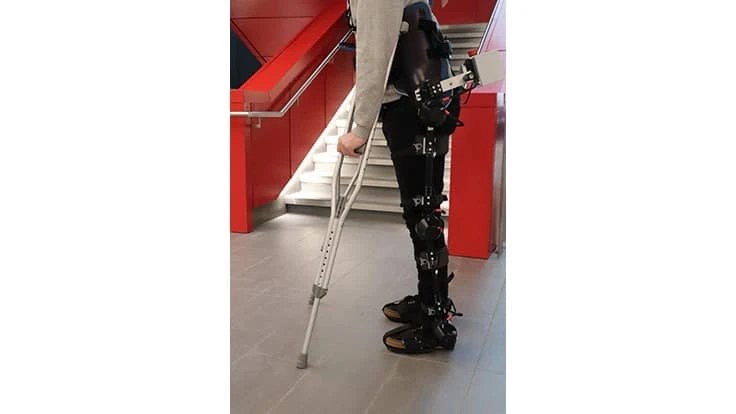
University of Waterloo
Robotics researchers are developing exoskeletons and prosthetic legs capable of thinking and making control decisions on their own using sophisticated artificial intelligence (AI) technology.
The system combines computer vision and deep-learning AI to mimic how able-bodied people walk by seeing their surroundings and adjusting their movements.
"We're giving robotic exoskeletons vision so they can control themselves," says Brokoslaw Laschowski, a PhD candidate in systems design engineering who leads a University of Waterloo research project called ExoNet.
Exoskeletons legs operated by motors already exist, but users must manually control them via smartphone applications or joysticks.
"That can be inconvenient and cognitively demanding," says Laschowski, also a student member of the Waterloo Artificial Intelligence Institute (Waterloo.ai). "Every time you want to perform a new locomotor activity, you have to stop, take out your smartphone, and select the desired mode."
To address that limitation, the researchers fitted exoskeleton users with wearable cameras and are now optimizing AI computer software to process the video feed to accurately recognize stairs, doors, and other features of the surrounding environment.
The next phase of the ExoNet research project will involve sending instructions to motors so that robotic exoskeletons can climb stairs, avoid obstacles, or take other appropriate actions based on analysis of the user's current movement and the upcoming terrain.
"Our control approach wouldn't necessarily require human thought," says Laschowski, who is supervised by engineering professor John McPhee, the Canada Research Chair in Biomechatronic System Dynamics. "Similar to autonomous cars that drive themselves, we're designing autonomous exoskeletons and prosthetic legs that walk for themselves."
The robotic researchers are also working to improve the energy efficiency of motors for robotic exoskeletons and prostheses by using human motion to self-charge the batteries.
The latest in a series of papers on the related projects, Simulation of Stand-to-Sit Biomechanics for Robotic Exoskeletons and Prostheses with Energy Regeneration, appears in the journal IEEE Transactions on Medical Robotics and Bionics.
Latest from Today's Medical Developments
- Arcline to sell Medical Manufacturing Technologies to Perimeter Solutions
- Decline in German machine tool orders bottoming out
- Analysis, trends, and forecasts for the future of additive manufacturing
- BlueForge Alliance Webinar Series Part III: Integrate Nationally, Catalyze Locally
- Robot orders accelerate in Q3
- Pro Shrink TubeChiller makes shrink-fit tool holding safer, easier
- Revolutionizing biocompatibility: The role of amnion in next-generation medical devices
- #56 Lunch + Learn Podcast with Techman Robot + AMET Inc.





